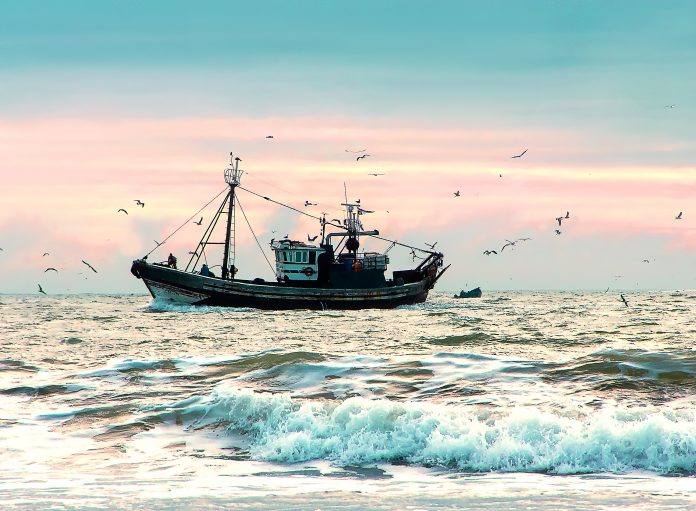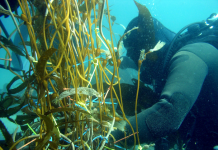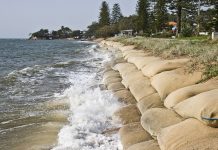Charlina Vitcheva, Director-General, DG MARE, European Commission, describes a holistic approach to the sustainable use of ocean resources, thriving coastal communities and a profitable fishing sector
Preserving and improving the state of our ocean is a necessity for our future and for our coastal communities. Thanks to the EU’s leading role, today, responsible ocean management features prominently on both our domestic and international agenda. At the European Commission, we work to keep Europe’s and the world’s oceans and seas clean, healthy, and productive.
Sustainable fishing must go hand in hand with tackling environmental challenges
Indeed, in the EU, fish stocks are arguably in the best shape in decades, and the number of stocks managed by the EU at sustainable levels has been increasing.
We consistently follow the scientific advice, providing the best fishing opportunity while ensuring that the fish stocks remain at healthy levels or that allow those that are in a bad shape to recover. Speaking of recovery, I am particularly pleased with the preservation measure agreed upon this year for one of Europe’s most iconic species – eels, to ensure that fishing activities do not interfere with their migration.
However, if we look at what is happening in the Baltic Sea, one of the biggest successes of our fisheries management efforts, we see that fisheries management measures alone are not sufficient to safeguard a healthy fish population and marine environment. We need a holistic approach in coastal communities to managing our oceans and seas. We must increase the coherence between our fisheries and environmental policies.
Departing from that idea, after months of hard work, the Commission presented in February an Action Plan to conserve fisheries resources and protect marine ecosystems. It concretely contributes to the Biodiversity Strategy, as well as bridges fisheries and environmental legislative obligations. We are looking at a variety of actions, including how to improve the selectivity of fishing gear, limit impacts on sensitive species, further improve the scientific data necessary to support our measures, and safeguard that governance, at all levels, ensure synergies between the fisheries and environmental authorities and stakeholders.
Finally, the Action Plan looks into the question of the seabed, and amongst others, at how to reconcile the use of bottom-contacting fishing gear with biodiversity goals, as announced in the Biodiversity strategy.
Preserving marine biodiversity in coastal communities
Preserving marine biodiversity ultimately means preserving the livelihood of the coastal communities, as only healthy marine ecosystems can deliver abundant fish populations. There is no doubt, however, that we need to ensure a balance between immediate socio-economic challenges and urgent protection of the marine environment. The Commission will be very vigilant in striking that balance. We will continue therefore working with Member States to ensure that EU funds like the European Maritime, Fisheries and Aquaculture Fund continue supporting the transition to more selective and environment-friendly fishing techniques. The transition needs to be just.
What is very pleasing is to see that our domestic efforts resonate on the global scene. COP15 led to the Kunming- Montreal biodiversity agreement for the conservation and management of 30% of areas by 2030. With the EU having already introduced this target a couple of years ago, it is encouraging to see the rest of the world following our lead. Hopefully, this spirit will carry on with a long-awaited agreement on the Treaty of the High Seas, for the protection of Marine Biodiversity of Areas Beyond National Jurisdiction – a key advancement for ocean protection.
Common Fisheries Policy: Overcoming modern challenges
The CFP – one of the few policies which are Union exclusive competence – provides a solid framework to enable the sustainability of fisheries, contributes to the supply of aquatic foods to EU citizens, and strengthens the resilience of the fishing sector. Over the last 20 years, it helped rebuild fish stocks, reduce the impact of fishing on the marine environment, and bring European fishing fleets to profitable levels.
However, progress towards sustainable fisheries has been challenged by significant evolutions over the last years:
- Fisheries are under pressure from the intensification of the use of the maritime space by more and larger other economic sectors,
- The departure of the UK from the EU led to new dynamics in fisheries governance, bringing additional complexity to the decision-making process,
- The unprovoked invasion of Ukraine by Russia sharply increased the prices of energy, jeopardising profit margins.
Moreover, climate change, biodiversity loss and ocean pollution structurally affect the long-term sustainability and stability of fisheries and the livelihoods of coastal communities.
The CFP is equipped to address these challenges. Ten years after its last reform, the Commission undertook a comprehensive review of its implementation, and in February, we presented a report on the functioning of the CFP. In that report, we look back and forward, pointing to ways to improve the effectiveness of our fisheries management tools. What has also become clear is that further progress towards environmental, economic, and social sustainability relies on stronger cooperation and trust between all stakeholders, within a form of governance that is more transparent and efficient at all levels.
The Energy Transition Initiative: Navigating Innovation
EU fisheries are facing significant structural changes, as the profitability and attractiveness of the fishing sector relies on its capacity to innovate and invest.
The next generation of fishing vessels and aquaculture facilities will have to operate with less impact on the ecosystem and climate, and by using fewer resources.
A priority is to accelerate the energy transition of the seafood value chain to reduce operational energy costs and thereby strengthen the economic resilience of the sector, while at the same time contributing positively to the climate objectives of the European Green Deal.
We started 2023 with concrete and ambitious advancements to strengthen the CFP upon the pillars of socio-economic and environmental sustainability. I look forward to seeing the results of our efforts to ensure a secure future for the industry, coastal communities, and our planet.
Contributor Details
Editor's Recommended Articles
-
Must Read >> Sand is vital for the protection of coastal regions















